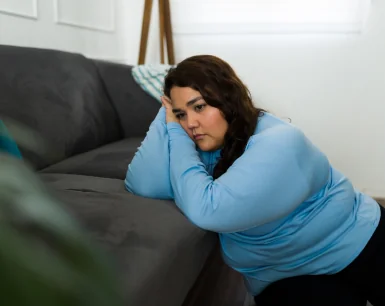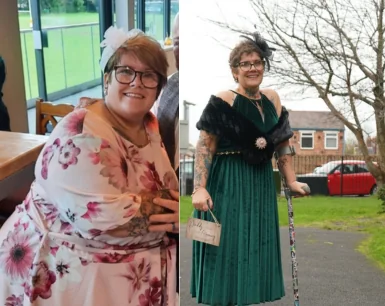If you are thinking about getting gastric sleeve surgery or have recently had it, you might be wondering about scarring. It is completely normal to be concerned about how your skin will heal after surgery, but the good news is that modern techniques help keep scarring to a minimum. With the right care, most scars fade significantly over time. Let’s break down what you can expect and how to give your skin the best chance to heal beautifully.
What Do Gastric Sleeve Scars Look Like?
Gastric sleeve surgery is done using a technique called laparoscopy, which is a minimally invasive approach. This means the surgeon makes several small incisions usually around five or six, rather than one large cut. These tiny incisions, usually 0.5 to 1.2 cm long, heal much faster and leave behind far less noticeable scars than traditional open surgery would.
In most cases, these small incisions do not even need stitches; surgical glue is often enough to close them up. The largest incision, which is usually around the belly button, might need a few sutures, but even that fades well over time.
How scars heal depends on factors like genetics, skin type, and how well you take care of them after surgery. At first, they might look a bit red or raised, but over time, they flatten and fade. Most patients find that after a year, their scars are barely visible, blending in with their natural skin tone.
That being said, some people are more prone to developing raised or thickened scars, known as keloids or hypertrophic scars. If you have a history of this, you may need to take extra precautions.
Why Do Scars Form?
Scars are a natural part of the healing process. When the skin is injured, your body produces collagen to repair the area. In the beginning, this collagen is laid down quickly, making the scar look raised or firm. Over time, as healing progresses, the collagen becomes more organised, and the scar starts to flatten and fade.
There are several factors that affect how a scar heals:
- Age – Younger people produce more collagen, which can sometimes lead to thicker scars.
- Skin Type – Darker skin tones may develop more noticeable scars or keloids.
- Genetics – Some people naturally heal with more prominent scars.
- Aftercare – How well you take care of your wounds can make a big difference in how your scars look over time.
How to Take Care of Gastric Sleeve Scars
At Phoenix Health, we believe that proper aftercare is key to reducing scarring and ensuring a smooth healing process. Here are some pro tips to help your scars heal well:
- Keep Your Incisions Clean and Dry
For the first few weeks after surgery, keeping your incisions clean is essential to prevent infection. Wash them gently with mild soap and water, pat dry, and avoid soaking in water (like in a bath or swimming pool) until they are fully healed.
- Follow Your Surgeon’s Wound Care Advice
Your surgeon will give you specific instructions on how to care for your wounds. This might include applying ointments, changing dressings, or avoiding certain movements. Sticking to these guidelines will help your scars heal better.
- Take It Easy on Exercise
While staying active is important for recovery, avoid any heavy lifting or strenuous exercise for at least six weeks. Stretching or straining your incisions too soon can make scars worse.
- Protect Your Scars from the Sun
Scars are more sensitive to sunlight, which can make them darker and more noticeable. Use a high-SPF sunscreen (50+), or keep your scars covered with clothing when you are outside, especially in the first year after surgery.
- Eat Well and Stay Hydrated
Your skin needs nutrients to heal properly. Eating a balanced diet rich in vitamins A, C, and E, along with plenty of protein, will support healing. Staying hydrated also helps keep your skin healthy.
- Avoid Smoking
Smoking reduces oxygen levels in your blood, which slows down healing and can lead to more noticeable scars. If you smoke, try to quit or cut down before and after gastric sleeve surgery for the best results.
Can You Reduce the Appearance of Scars?
If you are worried about visible scarring, there are ways to improve their appearance even after they have healed:
- Silicone Gel or Sheets – These are widely used to soften and flatten scars over time.
- Massage Therapy – Gently massaging the scar after it has fully healed can help break down excess collagen and make it less noticeable.
- Laser Therapy or Microneedling – These treatments, done by dermatologists, can help improve stubborn scars.
- Scar Revision Surgery – In rare cases, if a scar is thick or raised, minor surgery can help refine its appearance.
When Should You See a Doctor?
Most scars heal without any issues, but there are certain signs that might indicate a problem. If your scar becomes red, swollen, warm to the touch, or starts oozing pus, it could be a sign of infection, and you should seek medical advice immediately. Another concern is slow healing if your wounds are not closing as expected or remain painful for an extended period, it is worth discussing with your doctor. Additionally, if you develop keloids or very noticeable thick scars, you might need extra treatment to manage them effectively.
Gastric sleeve surgery can be a life-changing step towards better health, and while scars are a part of the journey, they do not have to be a major concern. With proper care, they often fade significantly and become barely noticeable. At Phoenix Health, we are here to support you through every step of your recovery. By following expert aftercare advice and looking after your skin, you can help your body heal in the best way possible.
Got questions about gastric sleeve surgery and gastric sleeve cost UK? Get in touch with us at Phoenix Health—we are happy to help!




